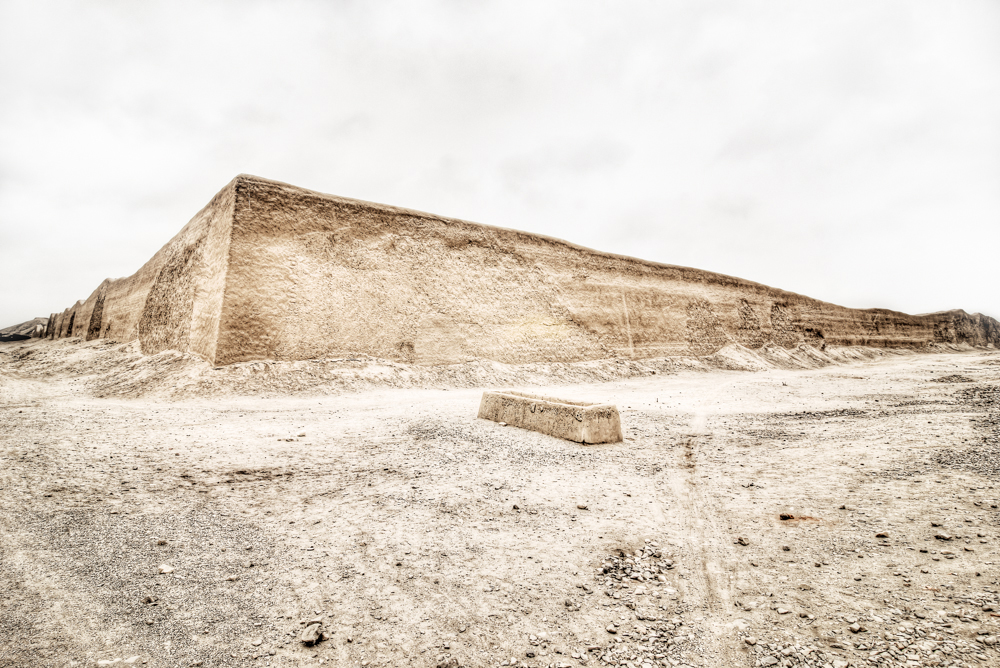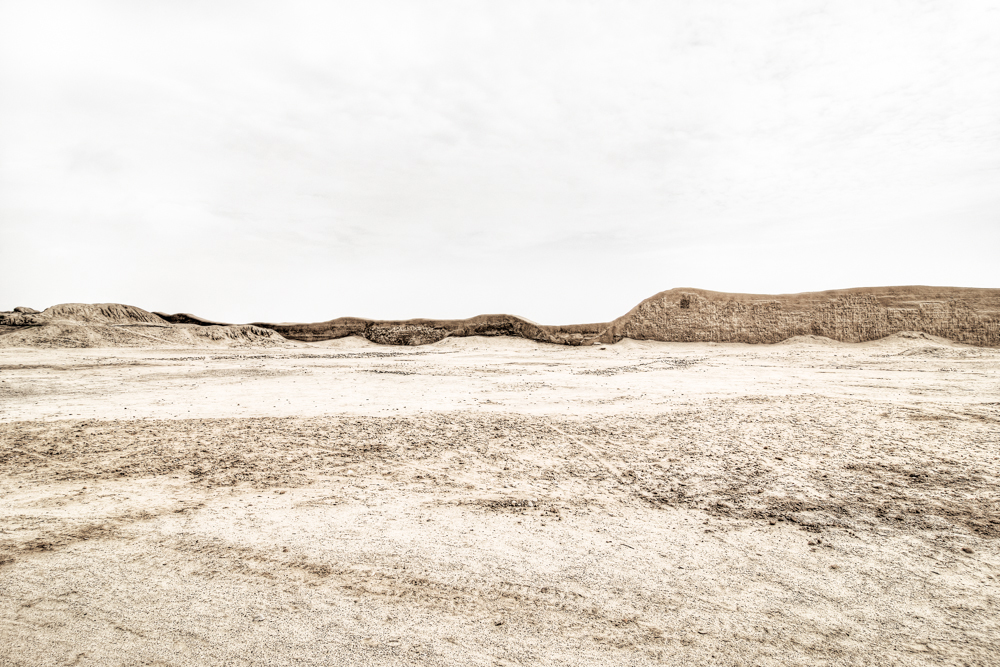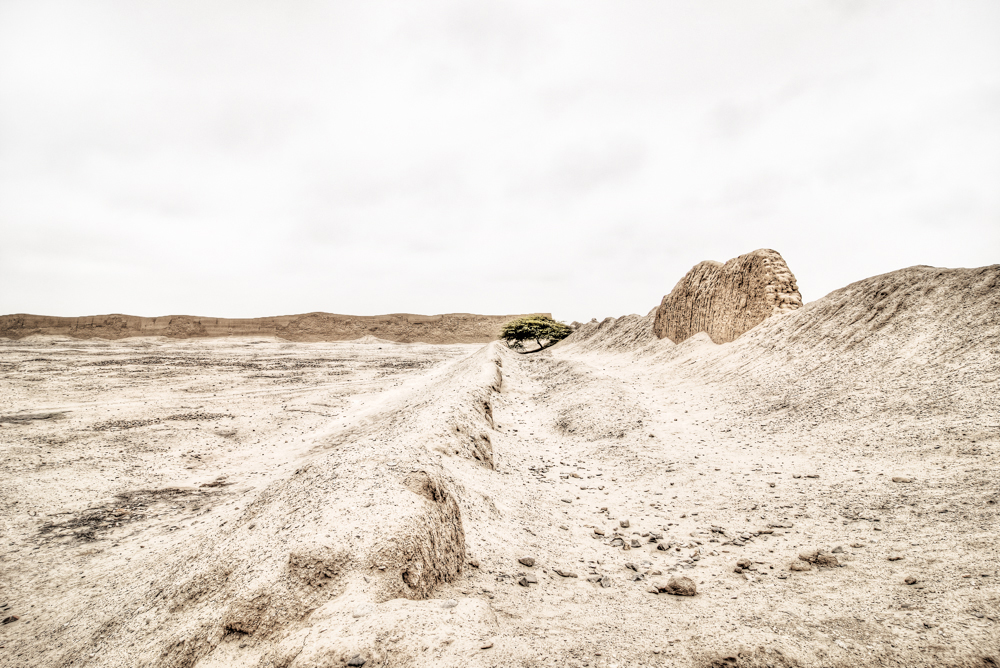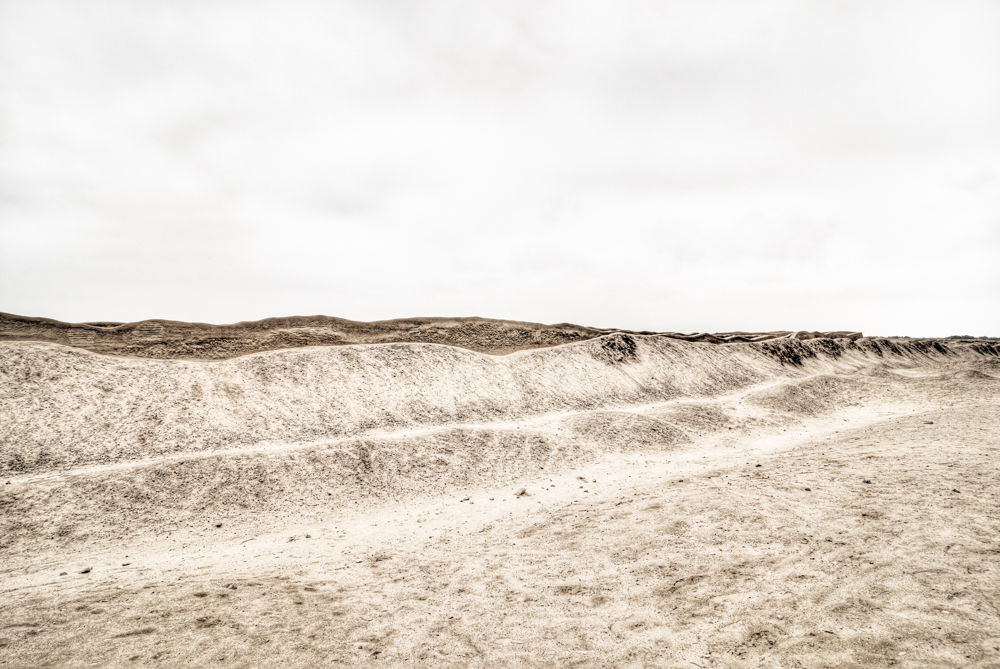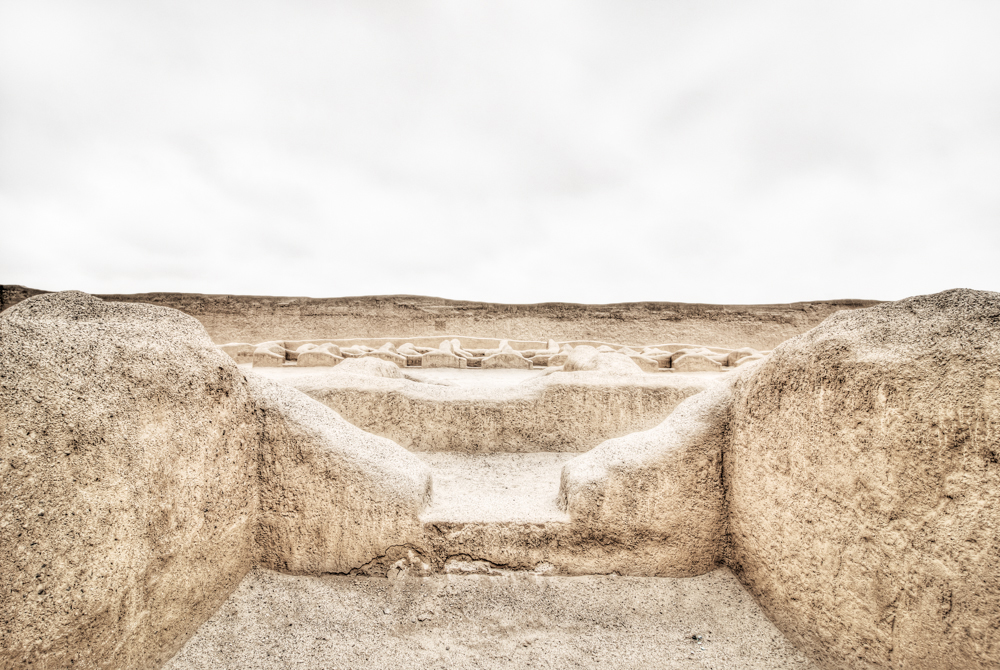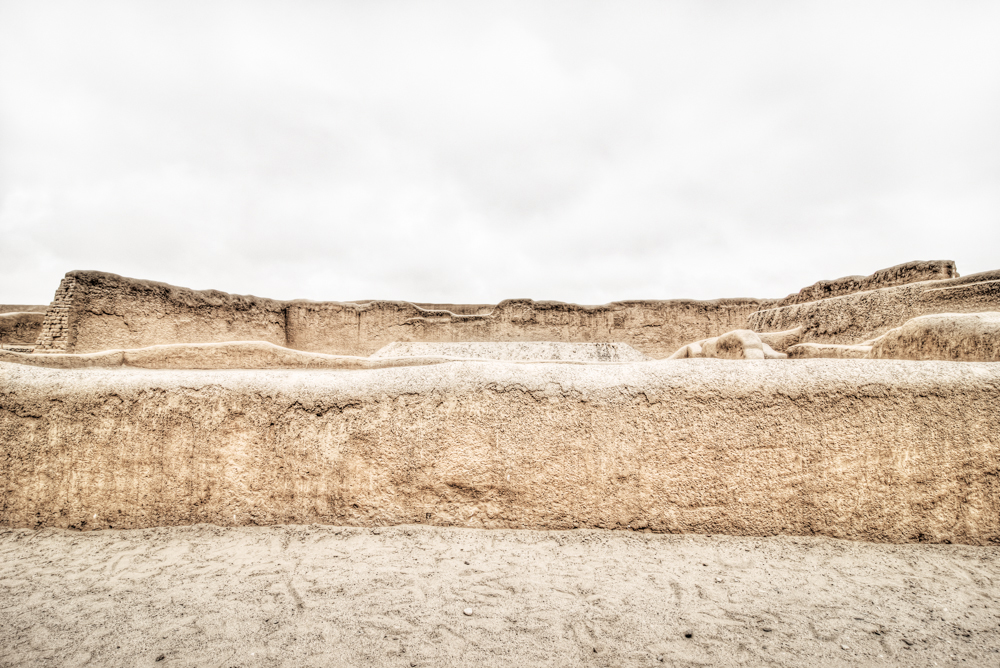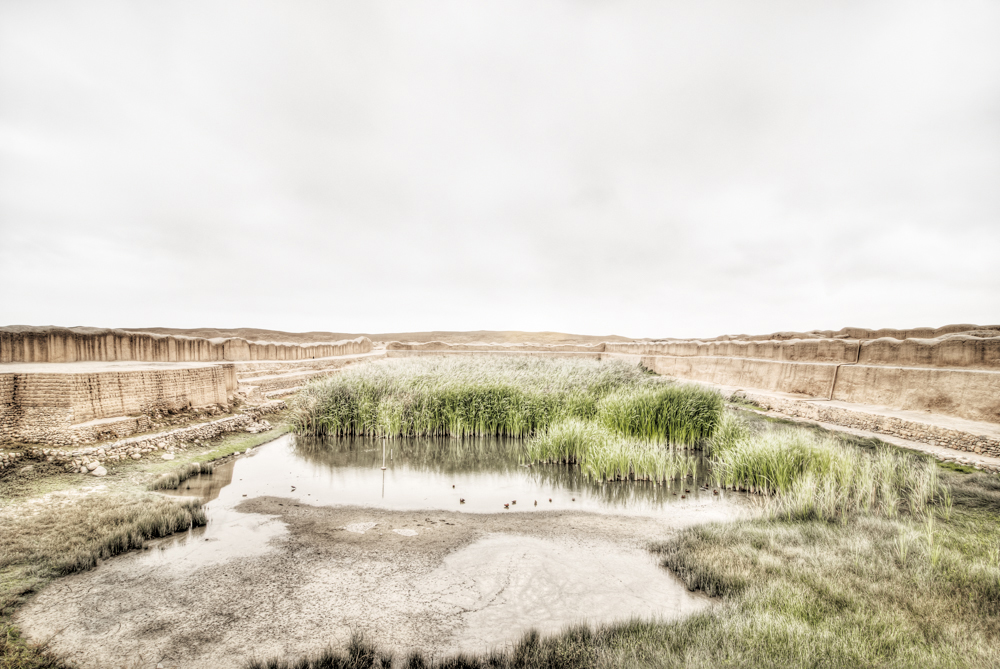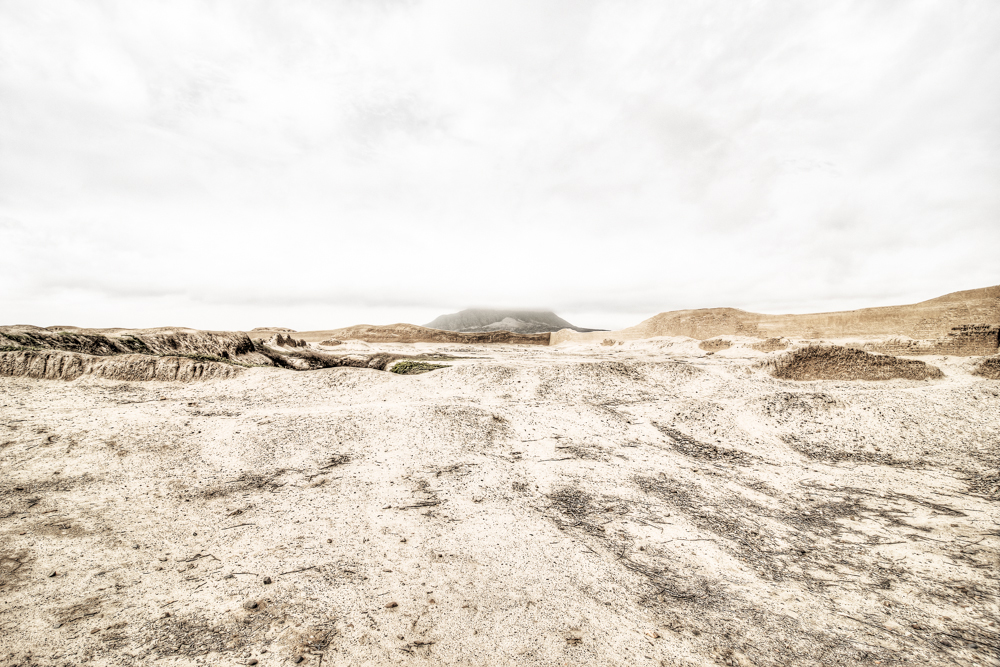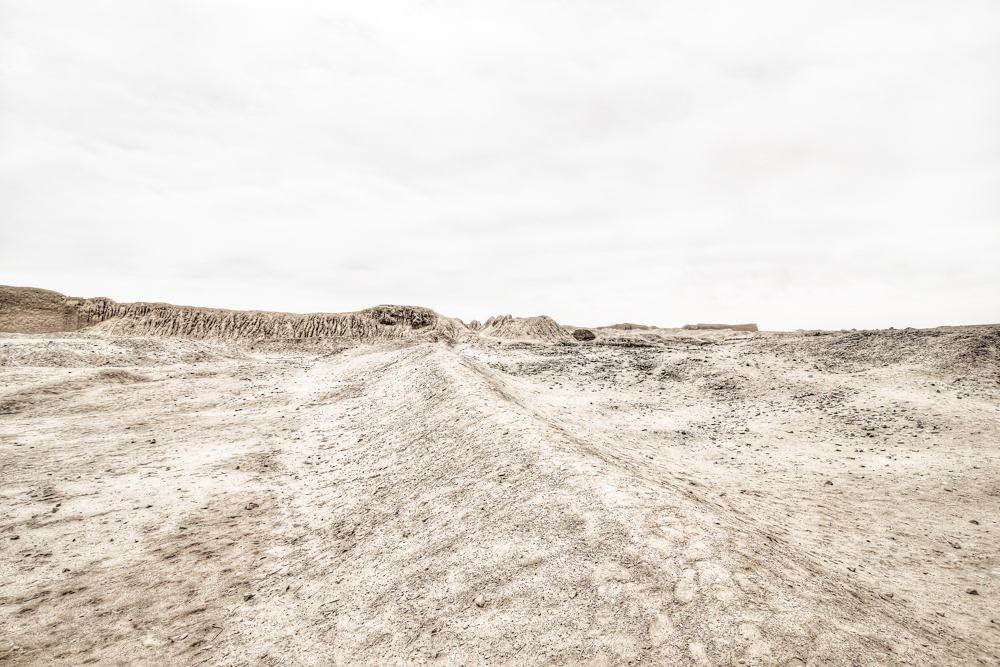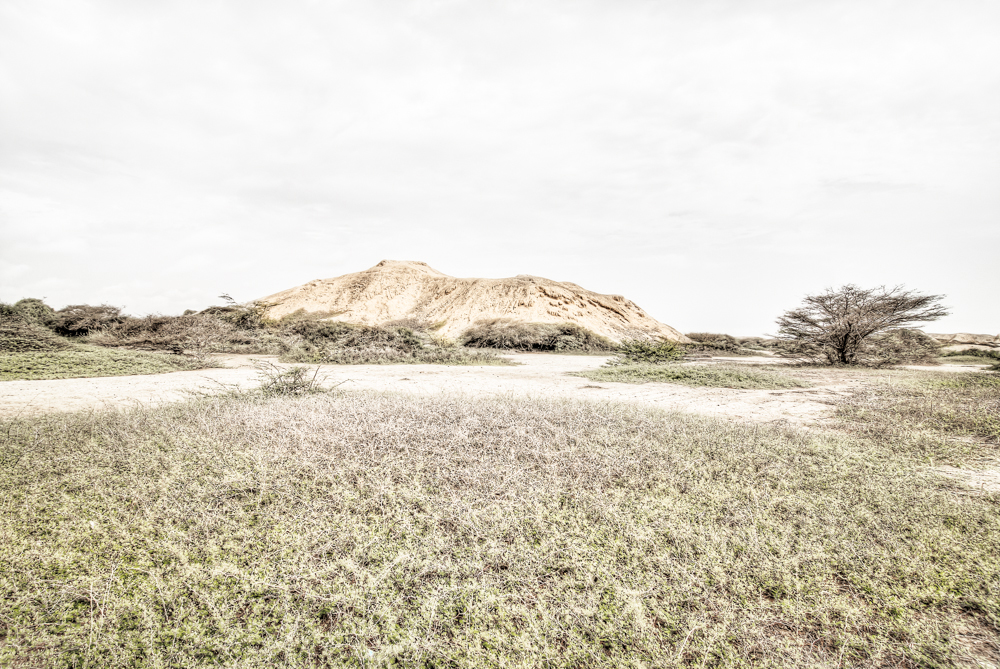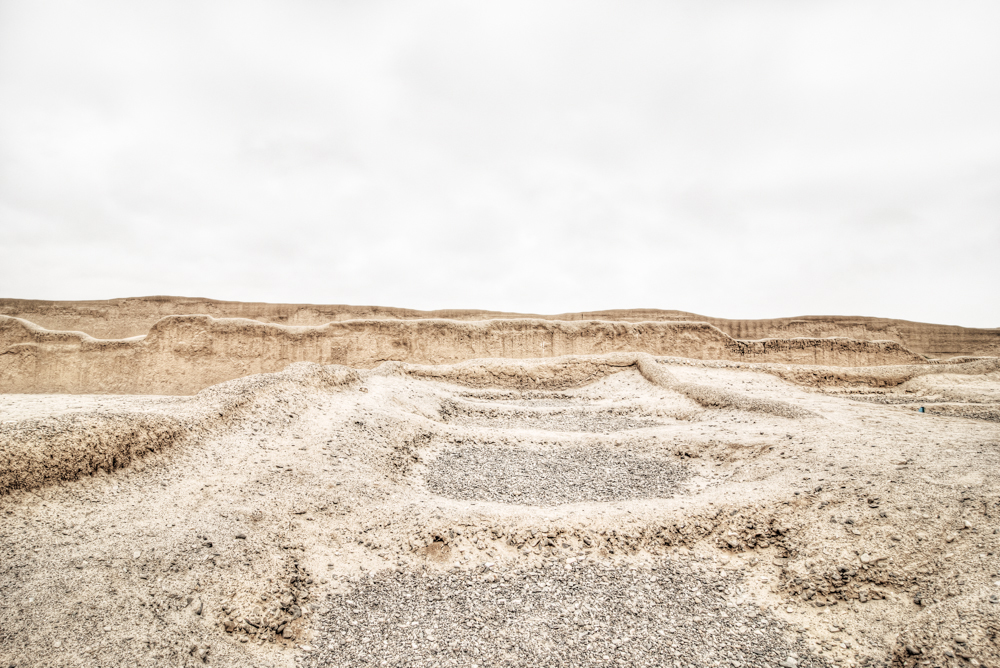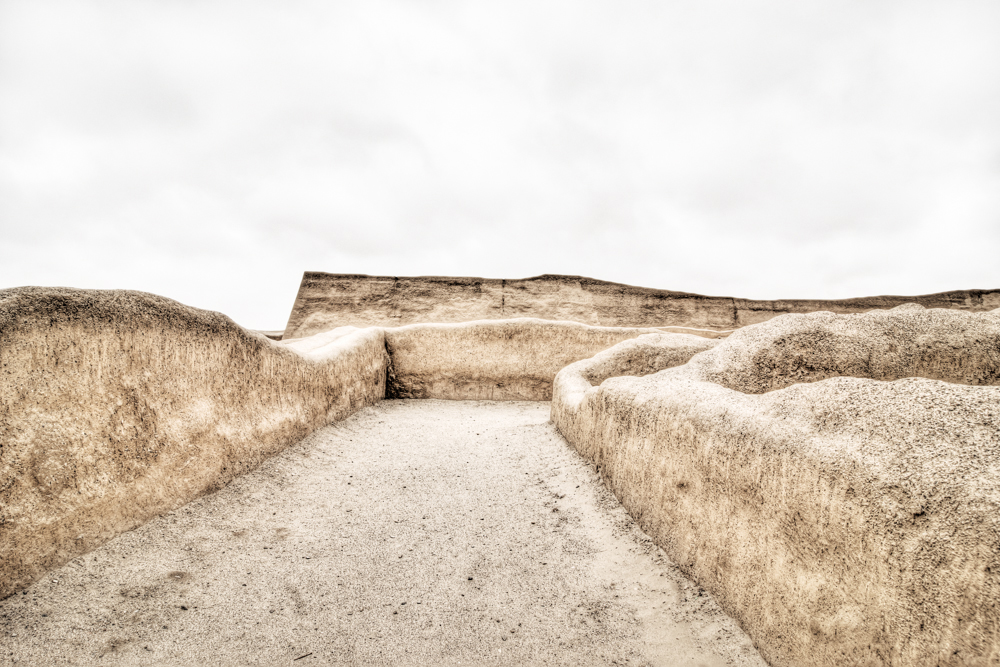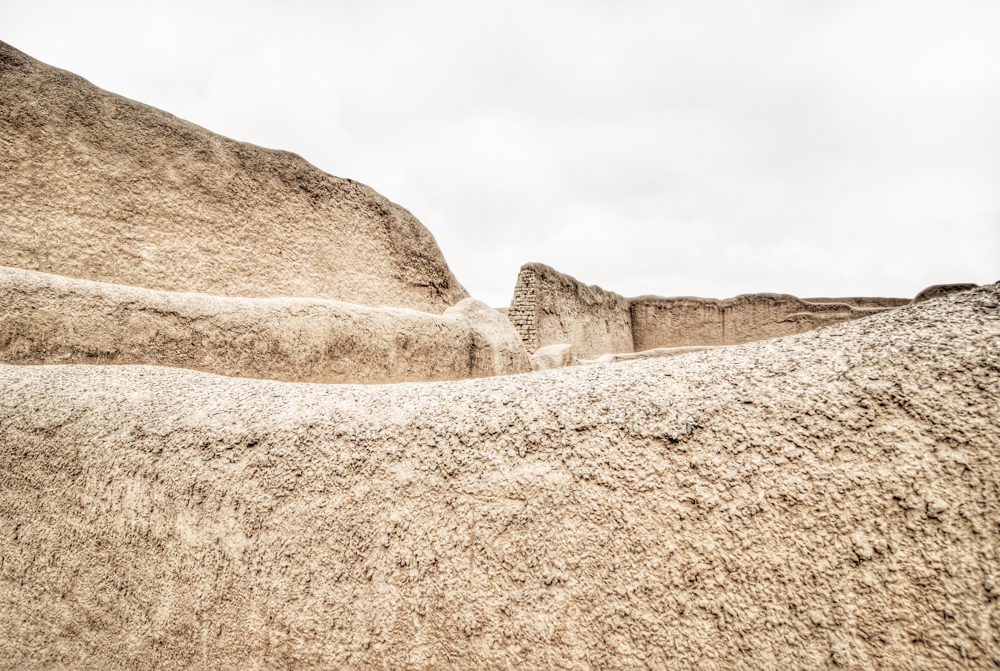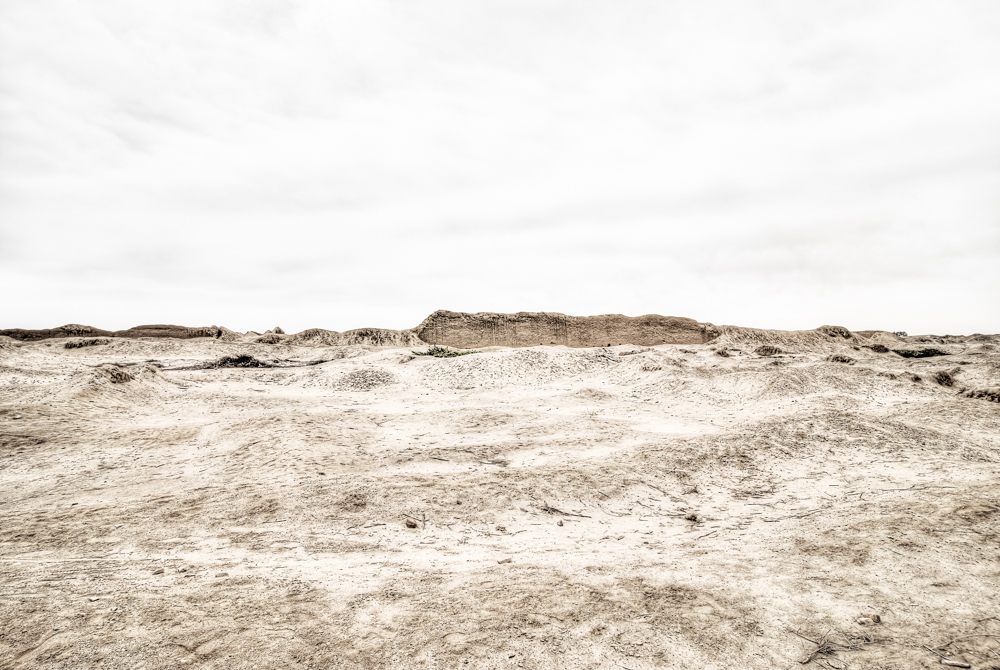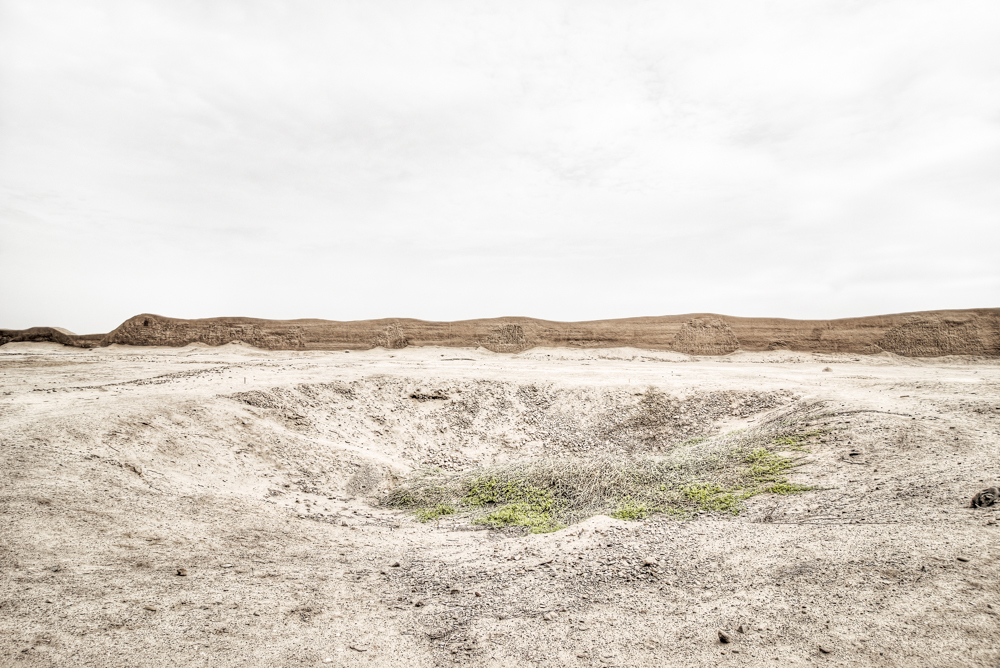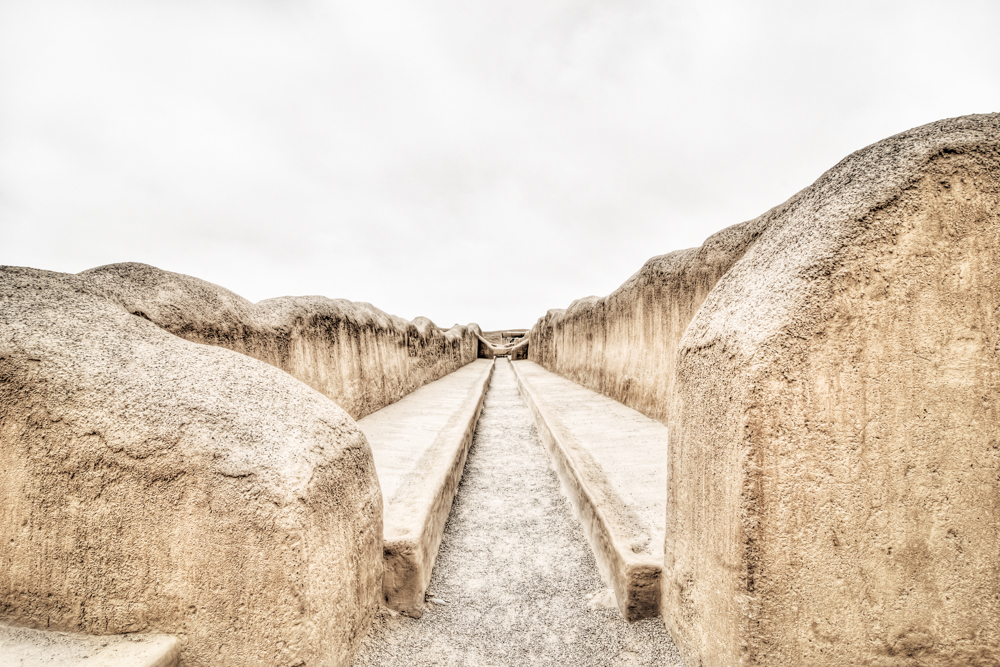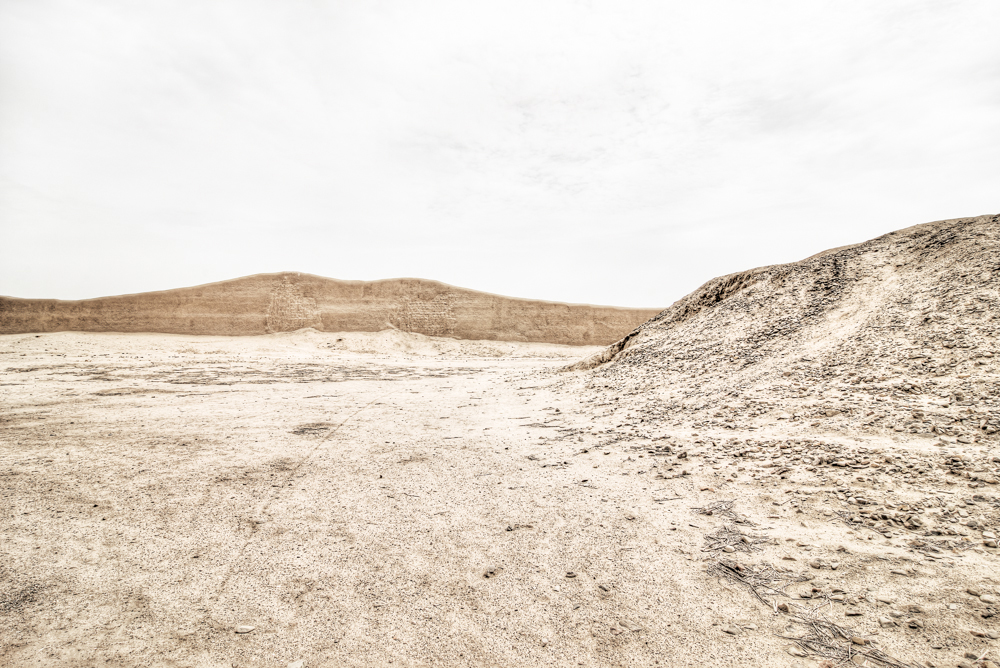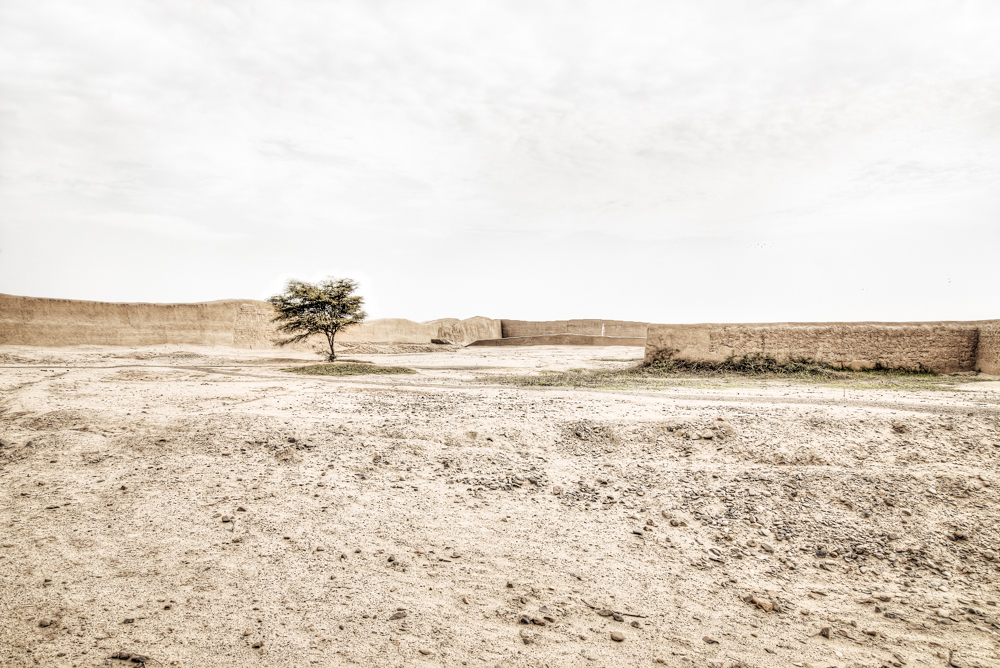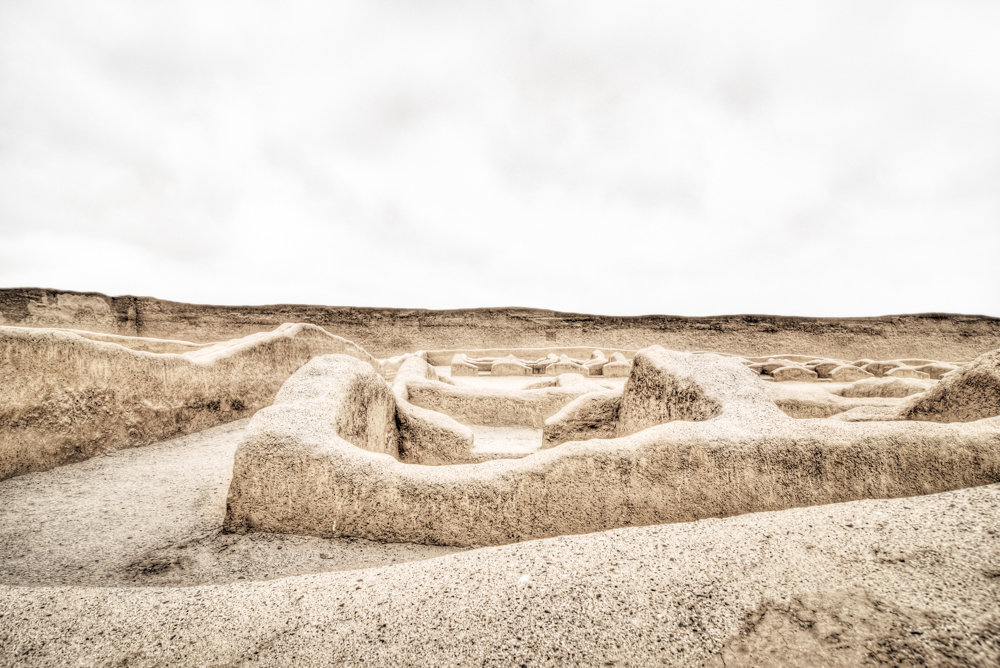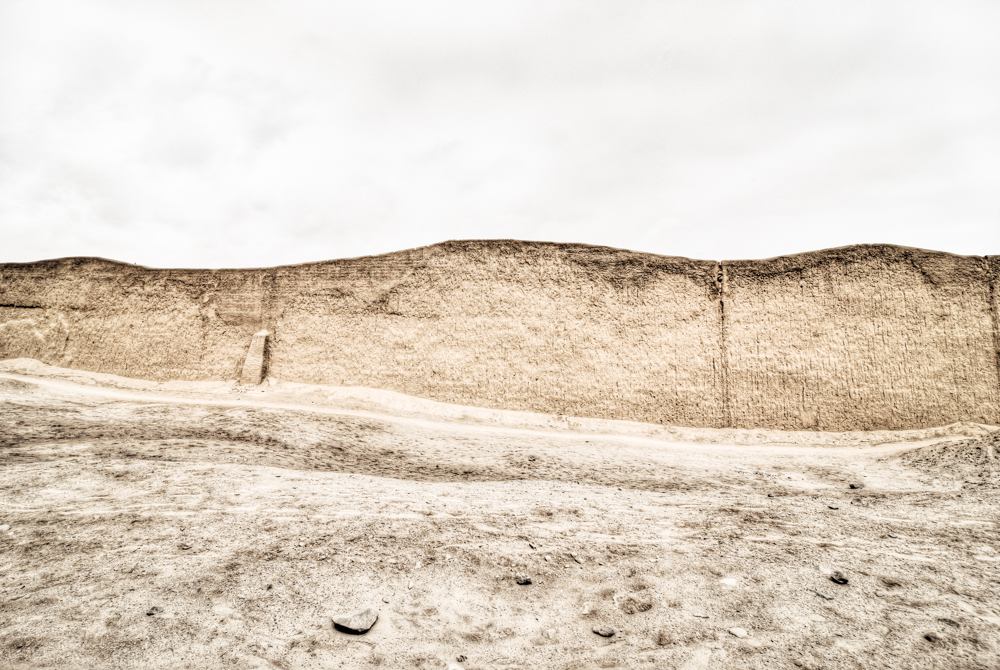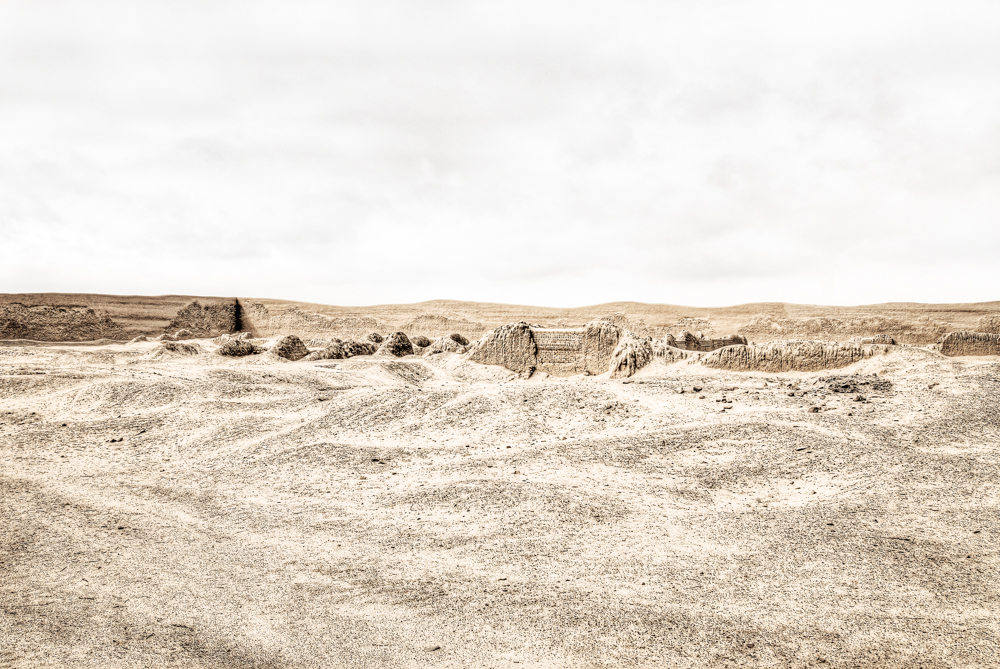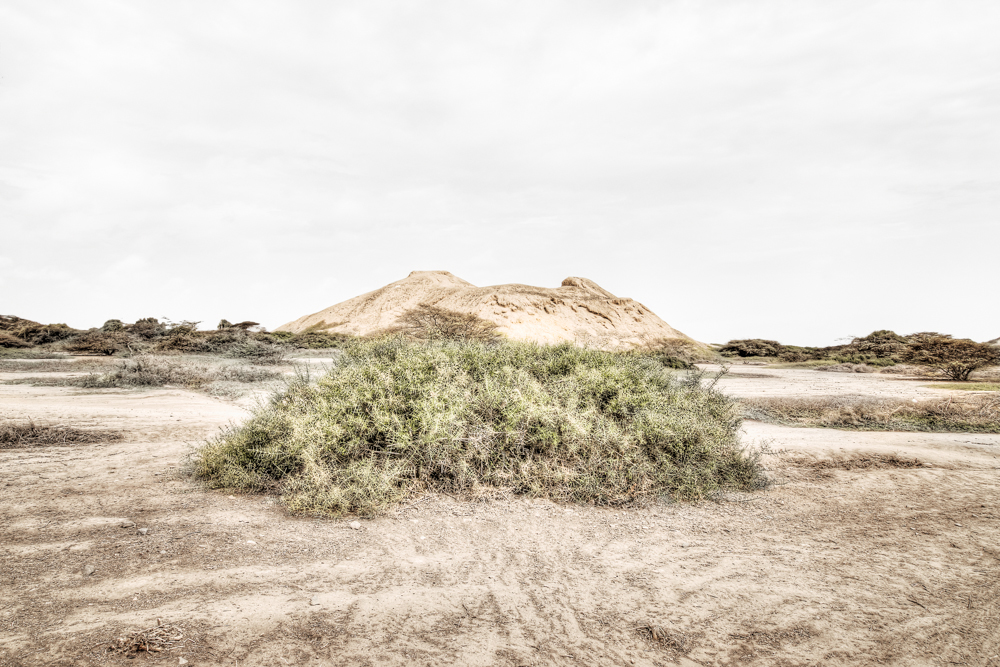CHAN CHAN
Located near the Pacific coast city of Trujillo in the Moche valley, Chan Chan was the capital of the Chimú civilization, which lasted from 850 AD to around 1470. The adobe metropolis, the largest in the Americas and of the world (covering nearly 36 square km), was the seat of power for an empire that stretched ca. 1000 km from just south of Ecuador down to central Peru. Thousands of structures, some with walls 10 m high, were woven amid a maze of passageways and streets. Palaces and temples were decorated with elaborate friezes, some of which were hundreds of feet long. By the 15th century, as many as 40,000 people lived in Chan Chan—mostly workers who served an all-powerful monarch, and privileged classes of highly skilled craftsmen and priests.
The Chimú followed a strict hierarchy based on a belief that all men were not created equal. According to Chimú myth, the sun populated the world by creating three eggs: gold for the ruling elite, silver for their wives and copper for everybody else.
The city of Chan Chan was established in one of the world's bleakest coastal deserts, where the average annual rainfall was less than a tenth of an inch. Still, the city’s fields and gardens flourished, thanks to a sophisticated network of irrigation canals and wells. The Chimú civilization was the first true engineering society in the New World, their engineering methods were unknown in Europe and North America until the late 19th century. Although the Chimú had no written language for recording measurements or drafting detailed blueprints, they were somehow able to carefully survey and build their massive canal through difficult foothill terrain between two valleys.
Chan Chan's days of glory came to an end around 1470, when the Inca conquered the city, broke up the Chimú Empire and brought many of Chan Chan's craftsmen to their own capital, Cuzco, 900 km to the southeast. By the time Spanish conquistador Francisco Pizarro arrived around 1532, the city had been largely abandoned.
Today the city is left to the mercy of the weather and the erosion of Chan Chan is described by the Unesco as rapid and seemingly unstoppable. Despite protective structures are being erected in various parts of the city and attemps to conserve the friezes Chan Chan slowly dissolves from brick into mud.
